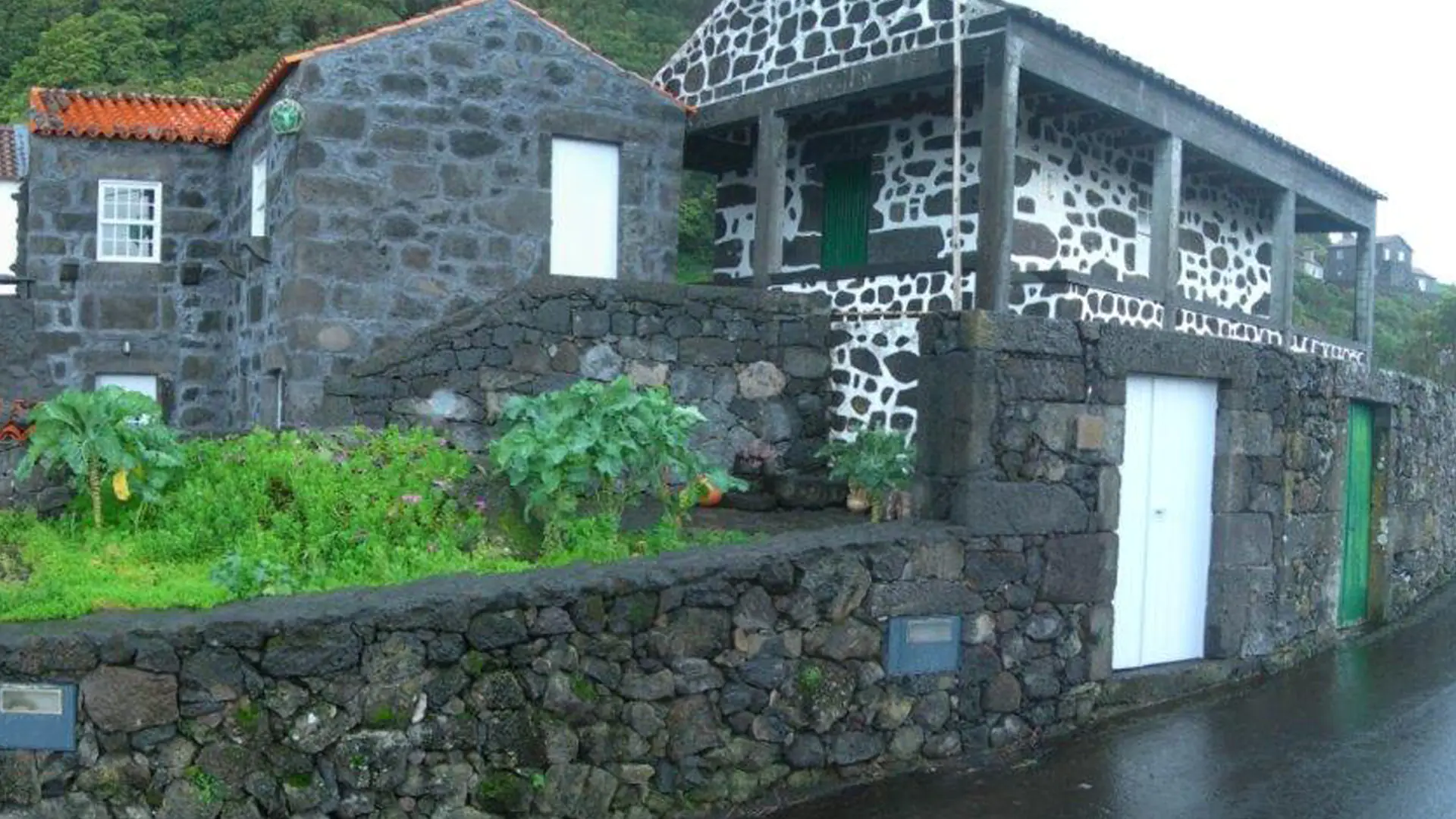



About Us
Casas Goulart was born from a family dream passed on from generation to generation. Amaro Silva, like his merchant father Manuel Inácio Silva, created his own business in the 1930s, selling groceries, fabrics, and building materials. He had a small film company and a modest boarding house where he lodged traveling salesmen who traveled the island's businesses taking note of orders.
Maria Helena, Amaro Silva's daughter, had been in touch with her father's business since she was a child, and although in the beginning she directed her life in another direction, the seed remained, and later, with the support and entrepreneurial spirit of her husband José Leonardo, an unconditional lover of Pico's black stones and stone houses, she started to restore some family houses, creating a small family business in rural tourism.
The pioneering company that grew, today has several accommodations with stunning views of the Pico - São Jorge sea channel, where comfort and good taste allied to tradition and the art of hospitality aim to give customers who choose Casas Goulart a warm and familiar environment.
At present it is Mónica Goulart, passionate about her island and its traditions, daughter of Maria Helena and José Leonardo, who continues the family business.
Santo Amaro
Pico Island is the youngest of the 9 islands of the Azores archipelago, with a total area of 447 kilometers², where the majestic mountain that gives its name to the island rises, with 2351 meters and a population of 13,643 inhabitants spread over 3 municipalities.
At the extreme of the municipality of São Roque do Pico is Santo Amaro, the smallest parish on the island. But to compensate for its small area is the unique beauty of its landscapes that stretch from the green of the hillside to the blue of the sea, dotted by white houses with red roofs, looking like a nativity scene nestled in this corner of peace and tranquility.
Santo Amaro has only 280 inhabitants, known for their friendliness and hospitality and for their active and enterprising spirit. This was the 1st place in Portugal to end illiteracy.
The inhabitants of this parish have always lived from agriculture and livestock, but soon saw in the sea a window of opportunity, resulting in great sailors who in coasting boats linked the islands of the Azores, or in open mouth boats and oars in calloused hands harpooned whales to be able to support their families. In 1984 whale hunting was banned and now that legacy has been transformed into respect for the giants of the sea. The boats are now regatta boats and the whales and dolphins that cross the Atlantic, friends that we often visit through the many whale watching companies.
In this so-called Land of Boats were born great shipbuilders who with their art and ingenuity took the name of this small parish to the whole world. From here emerged illustrious names that in different areas and nationally and internationally make this place very proud.
The Regional School of Handicraft of Santo Amaro, opened in the 80's, installed in a family house, remodeled respecting the old style, has been throughout the years a pole of development, preservation and learning of the traditional art of sewing, lace and embroidery, works in fish scales and fig tree kernels.
Today Santo Amaro besides all these activities is also a center of tourism sought after by people from all over the world who seek peace, tranquility, and the pure nature that only a paradisiacal place like this one, where the shearwaters sing serenades in nights of starry skies, undisturbed by the absence of light pollution, can offer.
